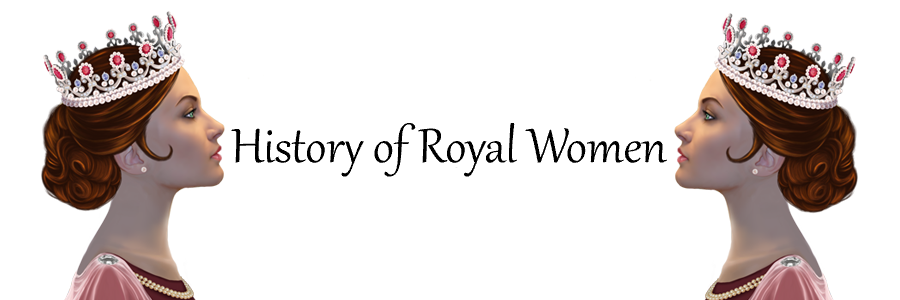
Anne Bowes-Lyon was born on 4 December 1917 as the second child of The Honourable John Bowes-Lyon and Fenella Hepburn-Stuart-Forbes-Trefusis in Washington in the United States. Her father was stationed at the British Embassy in Washington after having been wounded in action. Her elder sister had died in infancy before her birth. Three younger sisters followed: Nerissa (born 1919), Diana (born 1923) and Katherine (born 1926).
Her father was an elder brother of Queen Elizabeth the Queen Mother, and he died quite young in 1930 of pneumonia. He left Fenella a widow with four young children, including two (Nerissa and Katherine) who were intellectually disabled. Their cousin, Lady Mary Clayton, said, “They were missing one vital nerve that connects the two halves of the brain, which meant that they could not grow up normally. They were incredibly beautiful little things and very sweet.”1 After their father’s death, Nerissa and Katherine were sent to a private school.
Anne was known to have visited her sisters in later years. Her daughter later said, “When Mother came home late in the evenings after a visit to the hospital [where the sisters lived], she was often terribly depressed. But Father [Anne’s second husband, Georg] sat and waited for her, and that meant everything to her. To have someone to talk to. Someone who would listen and understand.”2
There is little information about Anne’s education, and a news article on her wedding only reported that she was educated in England, France and Switzerland.3 She was still only 20 years old when she married for the first time. On 28 April 1938, she married Thomas Anson, Viscount Anson, who was the heir to the Earl of Lichfield. Thus, Anne became known as Viscountess Anson upon marriage.
The New York Times reported, “Queen Elizabeth’s 20-year-old niece, Miss Anne Ferelith Bowes-Lyon, was married to Viscount Anson here today. The Queen and the Princesses Elizabeth and Margaret Rose attended the white and silver wedding at St. Margaret’s Church, Westminster, close to Westminster Abbey. The royal party disappointed the crowd by entering a side door. Police, mounted and afoot, kept the throng away from the main entrance and were kept busy clearing railings and eager spectators. Many women fainted in the crush. The bride, a daughter of the late Hon. John Bowes-Lyon and Mrs. Bowes-Lyon, wore white satin with a train of old lace edged in silver. The Archbishop of Canterbury officiated.”4
Almost exactly one year later, Anne gave birth to her first child, a son named Thomas Patrick John Anson. A daughter was born on 7 June 1941, and she was named Elizabeth Georgiana in honour of Queen Elizabeth and King George VI. The King even stood as young Elizabeth’s godfather. The war years were a trying time for the family. Her husband was on service abroad, while Anne and the children moved around. They eventually settled in Shugborough in Staffordshire. Although her husband returned from the war, Anne promptly left the family home. It is unclear what exactly happened. Her son later wrote, “I will probably never know what happened between them, but the story, I suspect, was far from uncommon: two people, scarcely out of adolescence, meeting, falling in love, marrying, and then almost immediately, being parted by war. Five years later, when they were reunited, they’d become different people.”5
The divorce became final in 1948, and the New York Times reported, “Viscountess Anne Ferelith Fenella Anson, niece of Queen Elizabeth, won a conditional decree of divorce from Viscount Anson of the Grenadier Guards today on the grounds of desertion. She received custody of their two children. The couple married in 1938. She charged he had left her in January, 1945.”6 Anne settled in London, where she worked various jobs to make ends meet.
At a Shrovetide ball at the Swedish Embassy, Anne would meet the man who was to be her second husband, Prince Georg of Denmark. He was the son of Prince Axel of Denmark and Princess Margaretha of Sweden, making him a great-grandson of King Christian IX of Denmark. He was also a first cousin of King Harald V of Norway, King Baudouin of Belgium, and King Albert II of Belgium, as well as a second cousin of King George VI of the United Kingdom. Georg lived in London and worked as an Acting Military Attaché.
- Denmark’s Scottish Princess in Royalty Digest Quarterly 4/2006 p.34
- Denmark’s Scottish Princess in Royalty Digest Quarterly 4/2006 p.37
- New York Times
- New York Times
- Denmark’s Scottish Princess in Royalty Digest Quarterly 4/2006 p.35
- New York Times

Be the first to comment